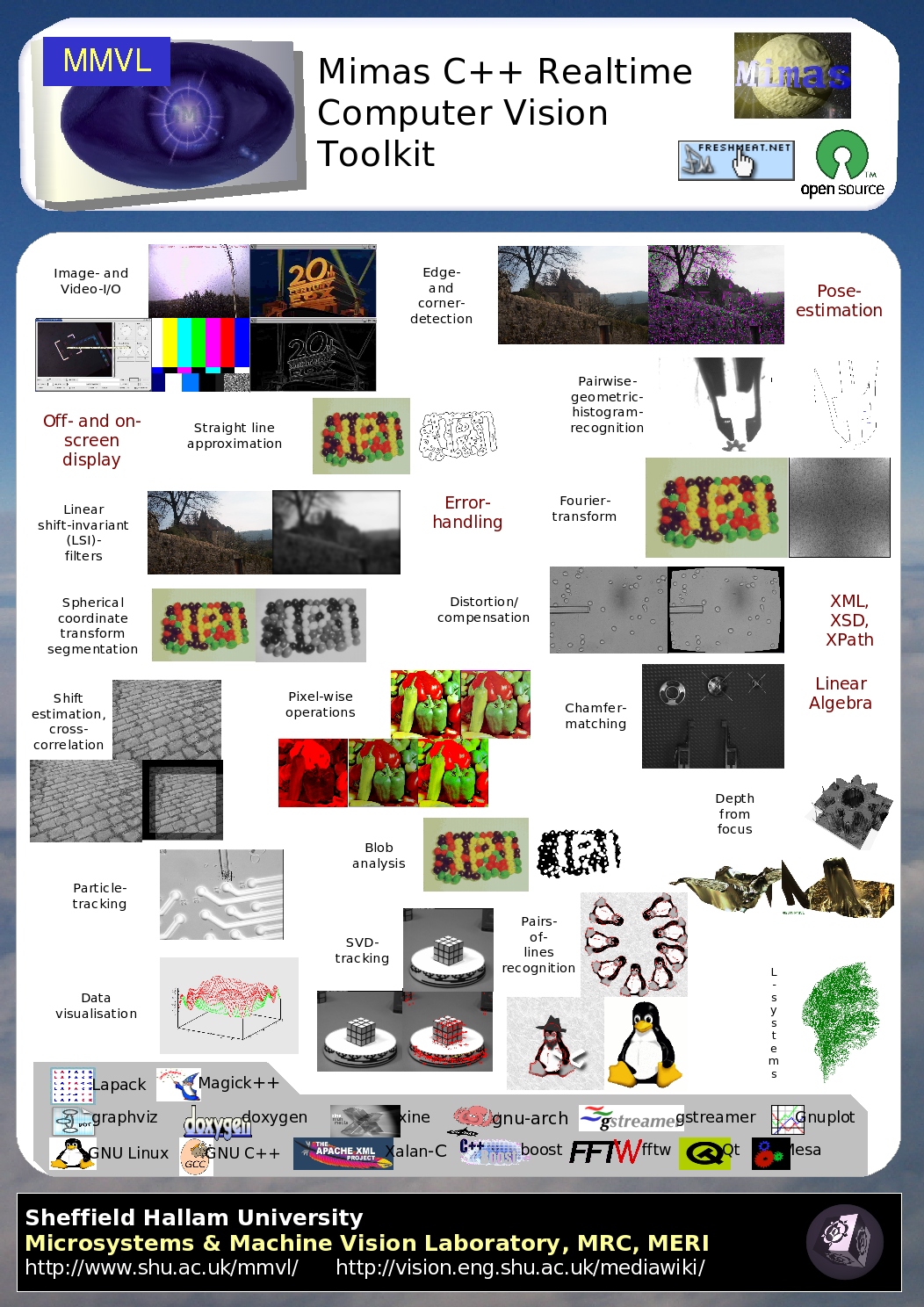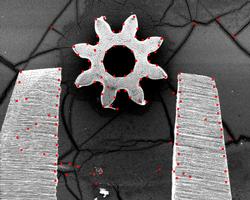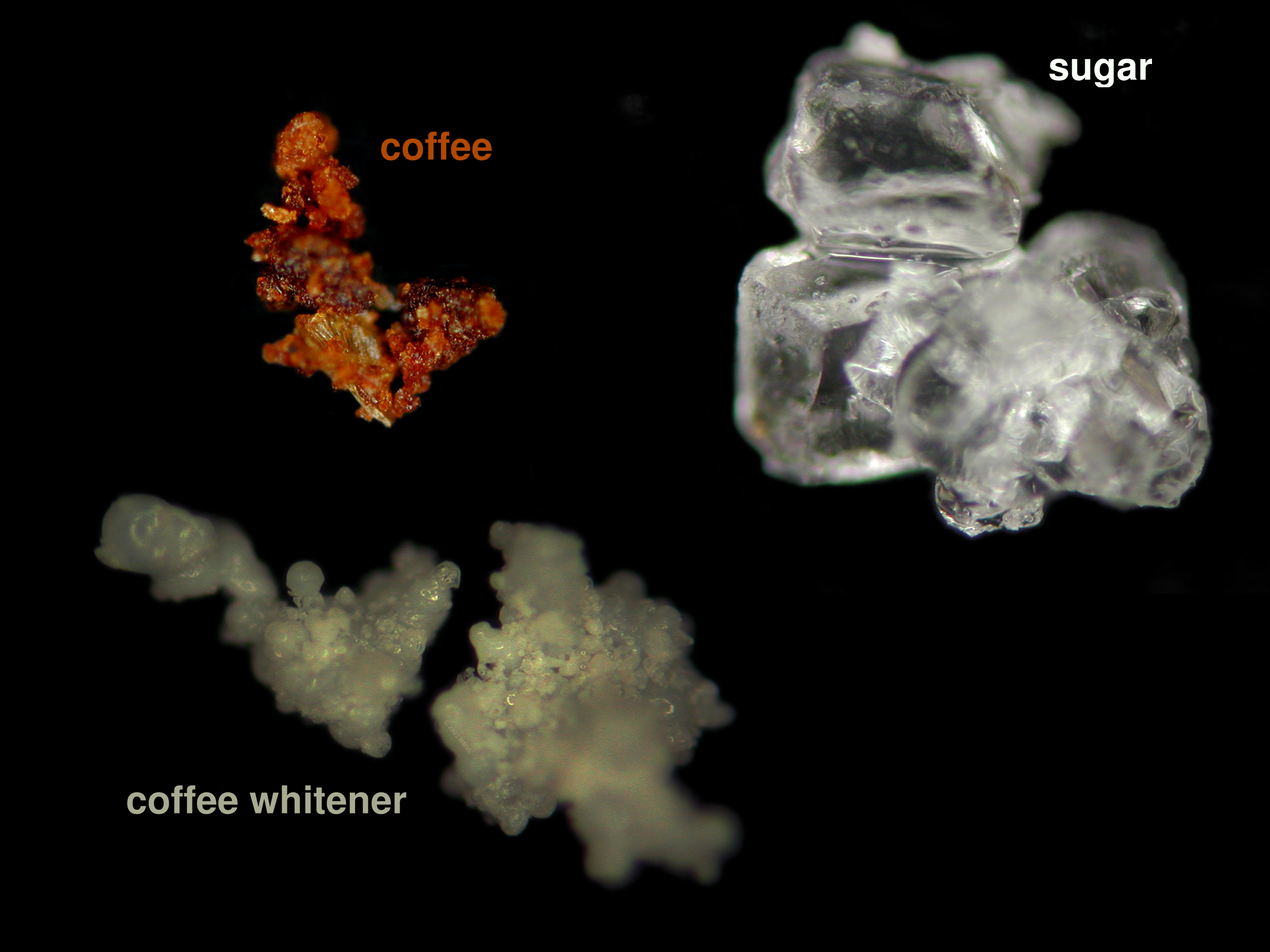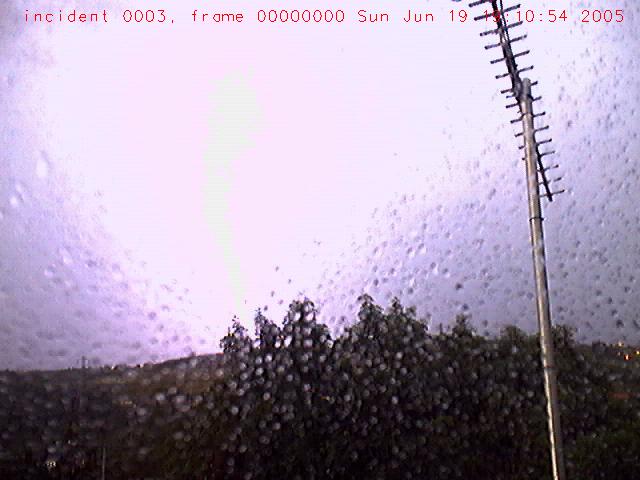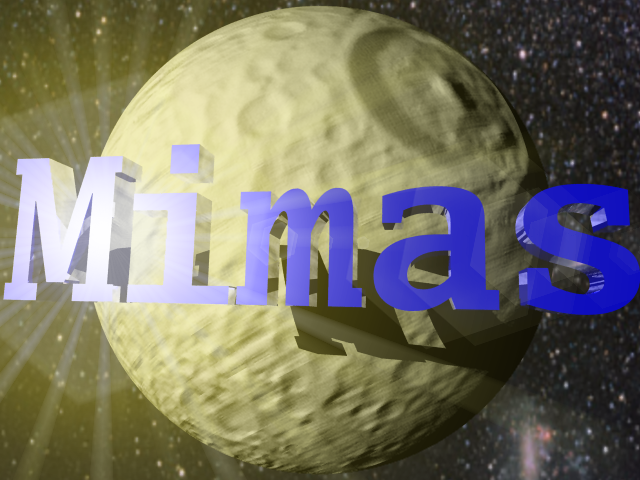Mimas
(Added logos) |
m (→Introduction) |
||
| Line 7: | Line 7: | ||
such as Canny. It was developed for GNU/Linux, but the parts, which are only relying on ''ImageMagick'', ''fftw3'' or ''Qt'', | such as Canny. It was developed for GNU/Linux, but the parts, which are only relying on ''ImageMagick'', ''fftw3'' or ''Qt'', | ||
can be compiled for ''MS Windows''. | can be compiled for ''MS Windows''. | ||
| + | |||
| + | For details have a look at the [http://vision.eng.shu.ac.uk/jan/mimas-docs/ Doxygen online documentation of Mimas]. | ||
=Downloads= | =Downloads= | ||
Revision as of 11:58, 5 June 2006
Contents |
Introduction
Mimas is a C++ real-time computer vision library for GNU/Linux. Mimas is open source, it is easy to use and includes tools for edge detection, corner detection, various filters, optic flow, tracking, blob analysis, Web cam tools for real-time applications, and much more. It also includes many implementations of traditional algorithms such as Canny. It was developed for GNU/Linux, but the parts, which are only relying on ImageMagick, fftw3 or Qt, can be compiled for MS Windows.
For details have a look at the Doxygen online documentation of Mimas.
Downloads
Mimas-2.0
![]() Download Mimas-2.0
Download Mimas-2.0 ![]() ("A tremour in the force") released on Mar 15th 2006
("A tremour in the force") released on Mar 15th 2006
Release Notes
- On newer systems, you have to force linking with libgfortran to build the lapack-wrappers (see here for more)
- Mesa off-screen rendering may crash NVidia's X-servers. NVidia doesn't support OSMesa.
- You'll experience a memory leak on most X-servers, when switching between on- and off-screen using X11-pixmaps. Therefore OSMesa is the preferred method for off-screen rendering. The configure script automatically will select OSMesa, if it is supported by your X-server.
Change log
- The mm_-prefix was removed from all classes in favour of the mimas-namespace.
- Direct transformation algorithms from different YUV formats to greyscale have been implemented.
- Various video sources (virtually any video file, DVDs, VCDs, streaming formats) are now accessible with mimas::image_xineinput, which is using libxine. See viewVideo example for more.
- Image files are now read using ImageMagick (Magick++), which allows reading and writing of animated GIFs, DICOM stacks (8 bit at the moment), FAX, Postscript, PDF, MPEG, RAS, ... See viewImage example for more.
- Mimas is configured to use OSMesa for off-screen rendering, if it is present on the system.
- The Mimas library now is independent of Qt. The examples, which are using Qt, have been ported to Qt4. This allows the Mimas library to be used with Qt3- as well as Qt4-programs.
- The function-wrappers for Fourier transform are now supporting both single and double precision.
- Lapack-wrappers extended with Cholesky factorisation and determinants.
- An example for L-systems was implemented.
Older releases
You can read older announcements here.
Demonstrations
- Microscope Vision Software
- Ascii-art using mimas and aalib.
- Camera Surveilance
- Microscope Control Software
- Sugar Pushing
- Depth from Focus
- Registration of TEM images
- Gradient Based Motion Estimation
- Locating tungsten-tip by means of cross-correlation
-
 Structural Invariant Feature Transform
Structural Invariant Feature Transform
-
 Graphical Programming with Mimas and Qt-Designer
Graphical Programming with Mimas and Qt-Designer
The demonstrations are not part of the mimas-download!
Functionality
Image data
You will need these images to run the particle_filter examples. [Help required to upload .tgz file (around 30M) containing nearly 200 pictures on my computer ~/sourceCode] Don't forget to change the location of the images in the runMe files.
Software Engineering
Mimas is using state-of-the-art software engineering. A variety of open-source tools and libraries is being used to develop Mimas:
-
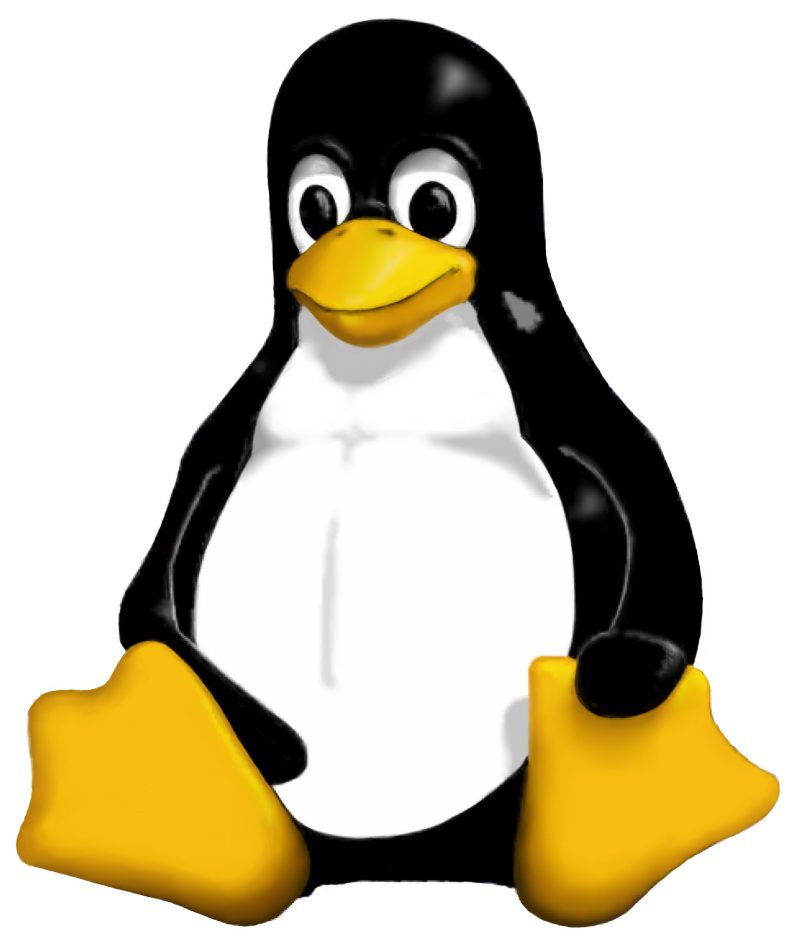 GNU/Linux: Mimas is being developed for the Linux operating system. Mimas may run on other Posix4/UNIX systems as well.
GNU/Linux: Mimas is being developed for the Linux operating system. Mimas may run on other Posix4/UNIX systems as well.
-
 Qt: The Qt-library developed by Trolltech is used for implementing graphical user interfaces.
Qt: The Qt-library developed by Trolltech is used for implementing graphical user interfaces.
-
 Mesa: Mesa is used to utilise hardware acceleration for displaying graphical primitives and images. The OSMesa extension is used (if present) to do off-screen rendering.
Mesa: Mesa is used to utilise hardware acceleration for displaying graphical primitives and images. The OSMesa extension is used (if present) to do off-screen rendering.
-
 STL: The software is making extensive use of the abstract data types provided by the Standard Template Library
STL: The software is making extensive use of the abstract data types provided by the Standard Template Library
-
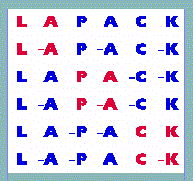 Lapack: Mimas offers wrappers for accessing some functions of Lapack.
Lapack: Mimas offers wrappers for accessing some functions of Lapack.
-
 Boost: The Boost Library offers smart pointers to do exception safe programming, multi-dimensional arrays, template meta-programming, abstract data types for linear algebra and many other programming concepts. The Boost library is going to be part of a future C++ standard.
Boost: The Boost Library offers smart pointers to do exception safe programming, multi-dimensional arrays, template meta-programming, abstract data types for linear algebra and many other programming concepts. The Boost library is going to be part of a future C++ standard.
-
 Magick++: Mimas uses Magick++ to load and save images.
Magick++: Mimas uses Magick++ to load and save images.
-
 Xalan-C and Xerces-C: Xalan-C and Xerces-C are the XML-related C++-libraries of the Apache Software Foundation. They can be considered as the most complete implementations of the XML- (extended markup language), XSD- (XML schema description) and Xpath- (XML path) standards.
Xalan-C and Xerces-C: Xalan-C and Xerces-C are the XML-related C++-libraries of the Apache Software Foundation. They can be considered as the most complete implementations of the XML- (extended markup language), XSD- (XML schema description) and Xpath- (XML path) standards.
-
 doxygen and
doxygen and 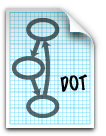 graphviz: The doxygen documentation system extracts inline-documentation from the C++ source code.
graphviz: The doxygen documentation system extracts inline-documentation from the C++ source code.
-
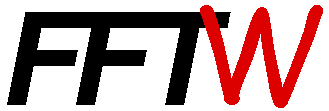 FFTW. The fftw-library is maybe the fastest library for performing discrete Fourier transforms.
FFTW. The fftw-library is maybe the fastest library for performing discrete Fourier transforms.
-
 popt: The popt-library was used to implement command-line interfaces.
popt: The popt-library was used to implement command-line interfaces.
-
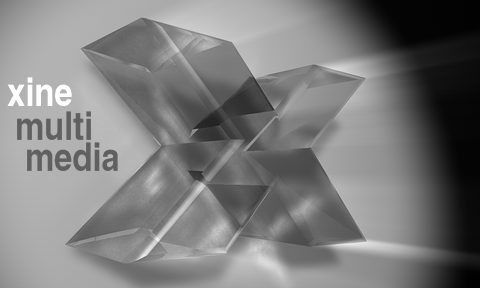 xine: Mimas (version 2.0 and later) can access videos using libxine.
xine: Mimas (version 2.0 and later) can access videos using libxine.
-
 Gnuplot: Gnuplot is used for plotting functions.
Gnuplot: Gnuplot is used for plotting functions.
-
 cvs and
cvs and 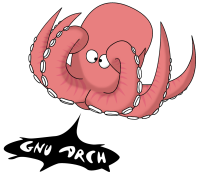 gnu-arch: Earlier cvs was used for version control. Now gnu-arch is being used.
gnu-arch: Earlier cvs was used for version control. Now gnu-arch is being used.
-
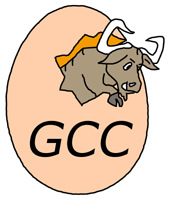 Gcc: gcc is the C++ compiler of the GNU project.
Gcc: gcc is the C++ compiler of the GNU project.
-
 gstreamer: Mimas has a plugin for interfacing with gstreamer.
gstreamer: Mimas has a plugin for interfacing with gstreamer.
-
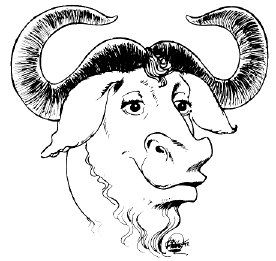 autoconf, automake and make: make, autoconf and automake are used to configure and perform the build of the software on various distributions of the Linux operating system.
autoconf, automake and make: make, autoconf and automake are used to configure and perform the build of the software on various distributions of the Linux operating system.
See Also
External Links
- Sheffield Hallam University
- Mimas page on official MMVL site
- Online documentation
- Access to tla/gnu-arch repository (currently no outside-access. Apache doesn't allow .archive-version to be read)
-
 Yahoo newsgroup and discussion forum
Yahoo newsgroup and discussion forum
-
 Mimas at freshmeat.net
Mimas at freshmeat.net
-

 Mimas at sourceforge.net
Mimas at sourceforge.net
- Image databases
- Download the animated Mimas-logo in 3GP-format for your mobile!
- Publicity
